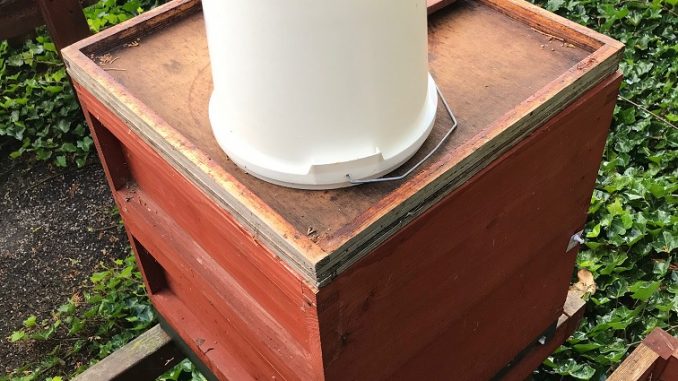
Our bees are now preparing for winter and it is time for us to make sure colonies are in a good condition to survive the winter.
My hives were all treated for varroa during August and this year I used Apivar. It is important to vary the type of treatment applied each year so that the risk of mite resistance is reduced. If you haven’t treated yet choose a treatment that isn’t temperature dependent. Apiguard is less effective in lower temperatures and can leave many mites in the colony at a time the winter bees are produced.
This coming week I shall finish moving colonies to their winter quarters from sites where they have foraged this summer. One of my main aims over winter is to provide as much shelter for colonies from all winds even if it means placing tens of colonies in one site. However, there must be enough pollen resource for such a site but nectar is less of an issue as the bees will be fed over the coming month. In my experience winter losses are reduced if shelter is provided. Weather presenters tell us of the ‘wind chill factor’ and this applies to bee colonies as well as humans!
Over the coming weeks I shall feed my bees Ambrosia as I find this an easy way to feed bees. It is an inverted sugar so there is less work for the bees when processing it. My aim is to finish feeding by the end of September and preferably before ivy comes into flower. Ivy honey can cause issues for bees if they have too much. It is associated with dysentery and can weaken a colony or cause it to die out. So when a colony has been fed enough syrup I place a super back on the hive to collect any ivy honey the bees may bring in. It is conventional super placing, i.e. brood box, queen excluder, super and then crown board. The super can be removed around mid November and processed but the honey will probably have set at this point. The reason I add the super is to allow space in the brood nest for the queen to lay. If bees bring in too much ivy it could take up too much nest space and thereby reduce egg laying .
If you added several frames of foundation to the brood box earlier in the season check if the bees have drawn them out fully. It may be necessary to move outside frames inwards by one otherwise the bees may not utilise the outside frames for stores. This means they have less food for winter and could starve next spring.
When feeding with granulated sugar it should be a strong solution, that is 2lbs of sugar to a pint of water. Only use white granulated sugar as other forms are harmful to bees. An easy way to dissolve sugar in bulk is to use a paint stirrer attached to a power drill. Place around 20lbs of sugar in a 5 gallon container and add hot tap water to cover the sugar. Stir with the drill for a minute or two and the sugar will have dissolved sufficiently. When I used granulated sugar in the past I was able to process around 100lbs in about an hour.
Finally, assess colonies and ensure they are queen right and look strong enough to make it through winter. It may be better to unite two weak colonies in the hope that a single one will survive rather than two weak ones die out.
Wally Thrale
